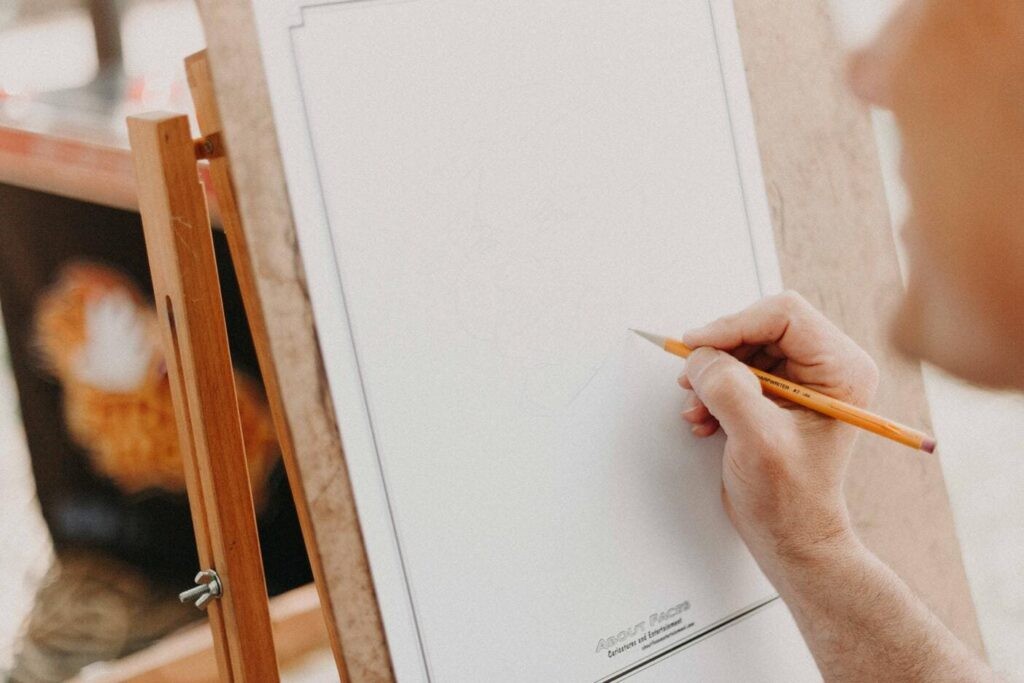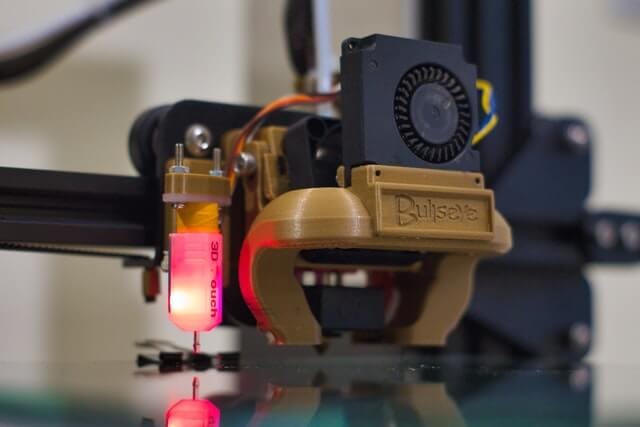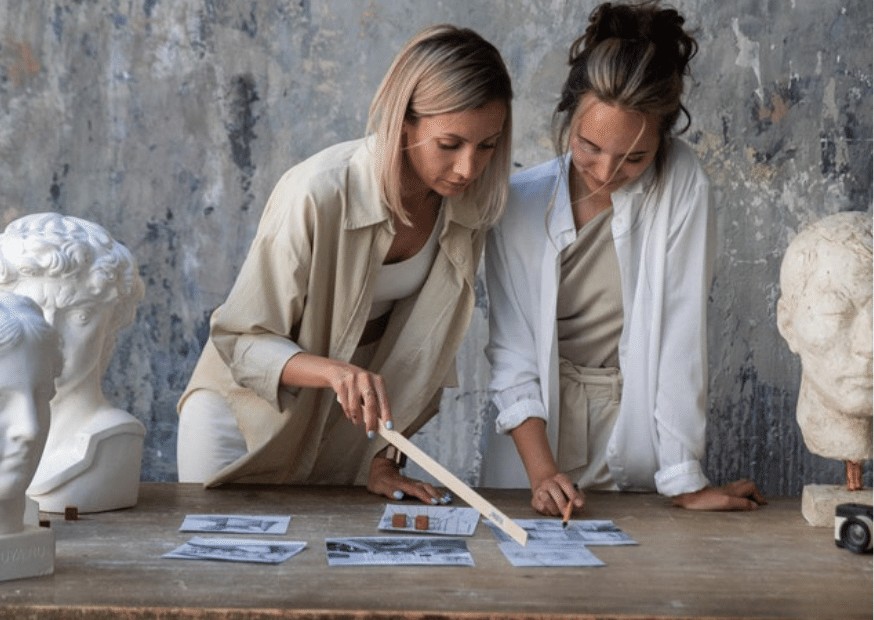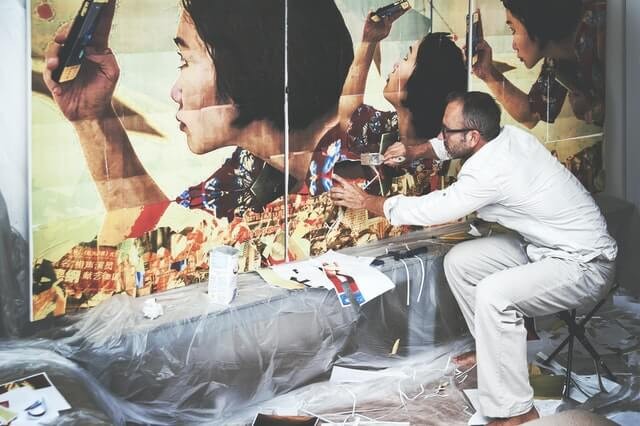What Is A Medium In Art? Understanding artistic mediums is crucial for art enthusiasts and creators alike. This guide, brought to you by WHAT.EDU.VN, unravels the concept of “medium” in art, exploring its definition, types, and significance. Delve into the world of art materials, techniques, and genres, and discover how a deeper understanding can enrich your appreciation and creation of art. Enhance your artistic vocabulary and explore the nuances of art forms, artistic techniques, and various art styles with WHAT.EDU.VN!
1. Defining Medium in Art
The medium in art refers to the materials or substances used by an artist to create a work of art. This encompasses a wide range of materials, from traditional paints and canvases to more contemporary materials like digital tools and mixed media. Understanding the medium is essential for comprehending the artist’s technique and the overall impact of the artwork.
The medium is the material utilized to create an art piece.
1.1. Substance, Materials, and Techniques
The term “medium” is often used to describe not only the substance itself but also the materials, tools, and techniques employed in creating a particular artwork.
- Substance: The actual material used, such as oil paint, acrylic paint, watercolor, clay, bronze, or digital pixels.
- Materials: The support or surface on which the artwork is created, such as canvas, paper, wood, or a computer screen.
- Techniques: The methods and skills the artist uses to manipulate the medium, such as brushstrokes, carving, welding, or digital rendering.
For instance, “acrylic on canvas” indicates the substance (acrylic paint) and the material (canvas) used. Similarly, “pastel painting” or “digital painting” clearly defines the medium. In this context, the plural of “medium” is “media.”
1.2. Binding Agents
For seasoned artists and art connoisseurs, a medium can also denote a specific type of additive used to “bind” the pigments in paint. Encyclopedia Britannica defines a medium as “liquids added to paints to bind them and make them workable.” These binding agents affect the paint’s consistency, drying time, and overall finish.
1.3. Art Genre
The term “medium” can also describe the broader genre or category to which an artwork belongs. It is not uncommon to see the art genre listed alongside the materials used. For example, “ink over canvas painting” identifies both the material (ink and canvas) and the genre (painting). Other common art mediums include painting, sculpting, drawing, printmaking, photography, and digital art.
2. Common Types of Art Mediums
Art encompasses a vast array of mediums, each offering unique possibilities for artistic expression. Here are some of the most common types:
2.1. Painting
Painting is a fundamental art medium that involves applying pigments to a surface using brushes, knives, or other tools.
| Type of Paint | Characteristics | Common Uses |
|---|---|---|
| Oil Paint | Rich color, slow drying time, allows for blending and layering. | Fine art paintings, portraits, landscapes. |
| Acrylic Paint | Fast drying, versatile, can be thinned with water. | Versatile, can be used on canvas, paper, wood. Suitable for various painting styles. |
| Watercolor Paint | Transparent, delicate, requires careful layering. | Landscapes, illustrations, expressive washes. |
| Gouache | Opaque watercolor, allows for layering and detail. | Illustrations, posters, design work. |
| Tempera | Fast drying, durable, often used on wood panels. | Icon painting, murals. |





2.2. Sculpture
Sculpture is the art of creating three-dimensional forms using a variety of materials. Sculptures offer a unique way to work with volume, shapes, forms, and perspective.
| Sculpting Material | Characteristics | Common Uses |
|---|---|---|
| Clay | Malleable, easy to shape, can be fired to harden. | Figurative sculpture, pottery, maquettes. |
| Stone | Durable, resistant, requires carving and chiseling. | Monumental sculptures, architectural details, decorative objects. |
| Wood | Organic, warm, can be carved, joined, or laminated. | Figurative sculpture, decorative objects, furniture. |
| Metal | Strong, versatile, can be cast, welded, or forged. | Abstract sculpture, architectural elements, jewelry. |
| Bronze | Durable, corrosion-resistant, ideal for casting intricate details. | Statues, monuments, decorative objects. |
| Plaster | Easy to mold, sets quickly, can be painted or finished. | Casts, molds, decorative elements. |
| Mixed Media | Combines various materials for unique textures and effects. | Contemporary sculptures, installations. |
2.3. Drawing
Drawing is a fundamental art medium that involves creating images on a surface using various tools. It is one of the skills most artists work to develop and master their craft.
| Drawing Tool | Characteristics | Common Uses |
|---|---|---|
| Pencil | Versatile, allows for a range of tones and details. | Sketching, shading, detailed drawings. |
| Charcoal | Soft, easily blended, creates rich dark tones. | Sketching, figure drawing, expressive drawings. |
| Ink | Permanent, precise, can be used with pens or brushes. | Line art, calligraphy, illustrations. |
| Pastel | Soft, powdery, vibrant colors, easy to blend. | Portraits, landscapes, expressive drawings. |
| Crayon | Waxy, bold colors, good for texture and layering. | Illustrations, expressive drawings, children’s art. |
| Digital | Versatile, allows for easy editing and experimentation. | Illustrations, concept art, graphic design. |
2.4. Printmaking
Printmaking is a process of creating multiple original artworks from a single matrix or template. Art prints can be created with a wide range of materials and techniques, from top-notch printing to woodcut presses.
| Printmaking Technique | Characteristics | Common Uses |
|---|---|---|
| Woodcut | Relief printing, bold lines, and graphic images. | Illustrations, posters, decorative prints. |
| Etching | Intaglio printing, fine lines, and detailed images. | Illustrations, fine art prints. |
| Lithography | Planographic printing, allows for a wide range of tones and textures. | Posters, fine art prints, illustrations. |
| Screen Printing | Stencil printing, vibrant colors, and bold designs. | Posters, t-shirts, graphic design. |
| Digital Printing | High-quality reproductions, allows for precise color control. | Fine art prints, photographs, posters. |
| Giclée | High-resolution inkjet printing, archival inks, and premium papers. | Fine art reproductions, photographs, limited edition prints. |
There are many techniques to achieve an art print: from sketching to high-tech prints like Giclée.
2.5. Digital Art
Digital art is created using computer software and hardware. This medium offers endless possibilities for experimentation and innovation.
| Digital Art Form | Characteristics | Common Uses |
|---|---|---|
| Digital Painting | Simulates traditional painting techniques using digital tools. | Illustrations, concept art, fine art. |
| Digital Sculpture | Creates three-dimensional forms using sculpting software. | Character design, animation, product design. |
| Digital Photography | Captures and manipulates images using digital cameras and software. | Fine art photography, commercial photography, photojournalism. |
| Digital Illustration | Creates illustrations using vector graphics and raster-based software. | Book illustrations, web design, advertising. |
| Animation | Creates moving images using various animation techniques. | Film, television, video games, advertising. |
| Mixed Media | Combines digital and traditional art techniques. | Experimental art, contemporary art. |
3. Essential Art Terms
To fully appreciate and discuss art, it’s helpful to be familiar with some essential art terms. Here are a few key terms to expand your art vocabulary:
3.1. NFT (Non-Fungible Token)
An NFT is a unique digital asset that represents ownership of a digital item, such as an artwork.
- Token: A single unit that certifies the validity of information stored in the blockchain.
- Non-Fungible: Cannot be interchanged or duplicated.
- Crypto Art: Art linked by a smart contract and minted as an NFT into the blockchain.
NFTs have revolutionized the art world, providing new ways for artists to sell and distribute their work.
3.2. Giclée
Giclée is a high-quality inkjet printing technique used to create fine art prints. It involves spraying archival ink onto premium paper to achieve a high-resolution reproduction of an image. Giclée prints are known for their exceptional color accuracy and longevity.
3.3. Value
In art, “value” has two meanings:
- Technical: Refers to the lightness or darkness of a color, used to create highlights, shadows, depth, and volume.
- Subjective: Refers to the cultural, social, or market worth of an artwork.
Understanding value is crucial for creating realistic and compelling artworks.
3.4. Patron
An art patron is an individual or group that supports artists financially and otherwise.
The term “patron-of-the-arts” had a highlight during the renaissance and this role was the backbone of many artists’ work.
- Historical Context: Patrons played a vital role during the Renaissance, commissioning artworks and providing artists with economic stability.
- Modern Patronage: Today, patronage can take many forms, including individual collectors, institutions, and online communities.
3.5. Copyright
Copyright is the legal right granted to the creator of an original work, including artworks.
- Rights: Copyright owners have the exclusive right to reproduce, distribute, display, and create derivative works from their creations.
- Protection: Copyright protects artists from unauthorized use of their work and ensures they receive proper credit and compensation.
3.6. Art Residency
An art residency is a program that provides artists with a space and resources to develop their craft.
An artist residency can be a turning point in a creator’s career: a chance to work on their craft and connect with other artists.
- Benefits: Residencies offer artists the opportunity to experiment, collaborate, and focus on their work without the distractions of daily life.
- Impact: Residencies can have a long-term impact on an artist’s career, providing them with new skills, connections, and inspiration.
3.7. Niche
In the art world, a niche refers to a specific type of art that appeals to a particular audience.
- Target Audience: Understanding your niche can help artists focus their marketing efforts and connect with collectors who appreciate their work.
- Market Demand: Identifying a niche can also help artists identify areas where their work can grow in demand.
3.8. Elements of Art
The elements of art are the fundamental building blocks of an artwork.
When talking about an art piece there are seven elements that are certain elements that are used to describe it: from space to color.
- Seven Elements: The seven elements of art are line, shape, form, space, texture, value, and color.
- Composition: By understanding and manipulating these elements, artists can create visually compelling and meaningful artworks.
3.9. Mixed Media
Mixed media refers to artworks that combine different materials and techniques.
- Combination: Mixed media artworks can incorporate painting, collage, sculpture, and other mediums.
- Experimentation: This approach allows artists to explore new textures, colors, and forms.
4. How Understanding Art Terms Helps Artists
Having a strong understanding of art terms can greatly benefit artists in several ways:
- Enhanced Communication: Knowing the correct terminology allows artists to communicate more effectively about their work.
- Professionalism: Using art terms correctly demonstrates professionalism and knowledge of the art world.
- Marketing: Art terms can be used to polish the descriptions artists use to promote their work and make it visible.
These terms can be used to enrich your ArtPlacer Discover profile, your Online Portfolio, artist’s statement, and even gallery proposals. When a visitor is taking a look at new artworks it helps to have a full description that goes beyond “acrylic on canvas.”
5. Frequently Asked Questions (FAQs) About Art Mediums
| Question | Answer |
|---|---|
| What is the most common medium in art? | Painting, particularly with acrylics and oils, is a highly prevalent medium due to its versatility and historical significance. |
| How does the medium affect the artwork? | The medium influences the texture, color, durability, and overall aesthetic of the artwork, playing a key role in expressing the artist’s vision. |
| Can an artwork have multiple mediums? | Yes, mixed media artworks combine various materials and techniques, allowing for innovative and complex creations. |
| What is the difference between medium and style? | Medium refers to the materials used to create the artwork, while style refers to the artist’s distinctive way of expressing their vision. |
| Is digital art a legitimate medium? | Absolutely! Digital art has gained significant recognition as a legitimate medium, offering artists powerful tools and platforms for creative expression. |
| How do I choose the right medium for my art? | Consider your artistic goals, the desired effect, and your personal preferences. Experiment with different mediums to find what best suits your style and vision. |
| What are some emerging art mediums? | Virtual reality (VR) art, augmented reality (AR) art, and interactive installations are gaining popularity as emerging art mediums, pushing the boundaries of artistic expression. |
| How does the medium impact the value of art? | The rarity, historical significance, and craftsmanship associated with a particular medium can influence the artwork’s value. |
| What role does the medium play in art history? | Art history is often categorized by the mediums used, such as the Renaissance painters’ use of oil on canvas or the ancient Greeks’ mastery of marble sculpture. |
| How do I learn more about different art mediums? | Explore art books, online resources, workshops, and classes to deepen your understanding of various art mediums. Engaging with art communities and visiting galleries can also provide valuable insights. |
6. Embrace Your Artistic Journey with WHAT.EDU.VN
Understanding the “what is a medium in art” is more than just knowing definitions; it’s about unlocking a deeper appreciation for the creative process. By expanding your knowledge of art terms and mediums, you can enhance your artistic journey, whether you’re an artist, collector, or simply an art enthusiast.
Do you have more questions about art mediums or any other topic? At WHAT.EDU.VN, we understand the challenges of finding quick, reliable answers to your questions. That’s why we offer a free platform where you can ask any question and receive insightful responses from knowledgeable individuals. Whether you’re a student, a professional, or simply curious about the world around you, WHAT.EDU.VN is here to help.
Don’t hesitate to reach out to us at:
- Address: 888 Question City Plaza, Seattle, WA 98101, United States
- WhatsApp: +1 (206) 555-7890
- Website: WHAT.EDU.VN
Visit what.edu.vn today and ask your question for free. Let us help you explore the world of art and beyond.